Types of Facing Bricks and Their Applications
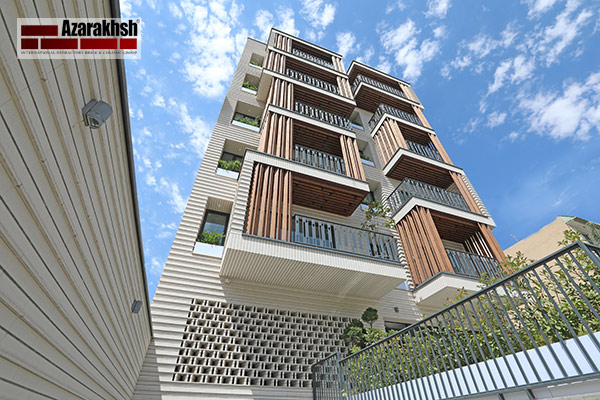
The building façade is the first element that catches the eye at first glance. Therefore, its beauty, durability, and quality play a crucial role in architectural design. Among the oldest and most widely used materials for façades, facing bricks stand out as both practical and aesthetically pleasing. Over time, these bricks have evolved into a wide variety of styles, colors, and innovative designs.
In this article, we will explore the main types of facing bricks, their features, and their benefits in construction projects:
- Fireclay Facing Brick (Refractory Brick)
- Kazakh Brick (Traditional Clay Brick)
- Shale Brick
- Woven (Basket Weave) Brick
- Lofthun Brick
- Bahmani Brick
- Glazed Brick
Fireclay Facing Brick (Refractory Brick)
One of the most durable and visually appealing types of façade bricks is the fireclay brick, made from refractory clay. Available in a wide range of colors and patterns, these bricks are highly resistant to harsh weather conditions, heat, and UV radiation—making them an excellent choice for building exteriors. Modern refractory bricks, such as Azarakhsh fireclay bricks, come in rustic, flat (plaque), and contemporary designs, with colors ranging from white, gray, chamotte, red, brown, to black, and in multiple sizes.
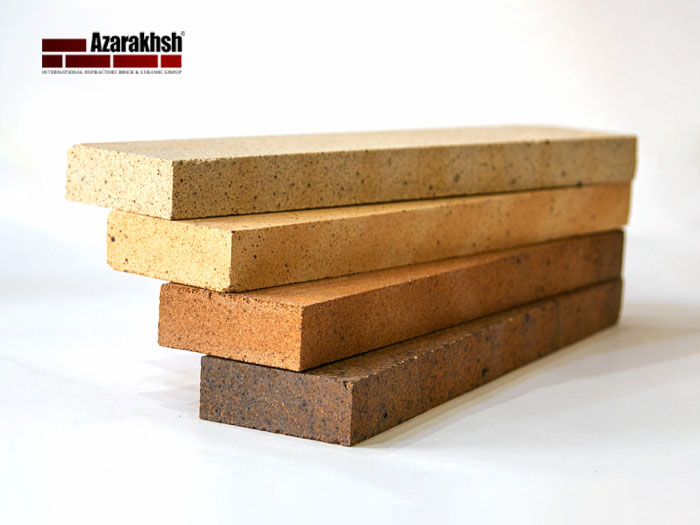
Kazakh Brick (Traditional Brick)
Kazakh bricks are among the oldest traditional bricks, made from natural clay. They have long been used in building façades due to their strength, affordability, and authentic appearance. They are available in several shades such as white, peach (onion-skin color), natural red, ochre red, variegated, and brown.
Shale Brick
Shale bricks are a combination of clay and shale, often enriched with minerals such as quartz, calcite, montmorillonite, dolomite, and albite. These bricks are produced in six colors: red, brown, black, gray, white, and yellow. Shale bricks can be used for both interior and exterior façades, as well as flooring.
Woven (Basket Weave) Brick
The woven-pattern brick gives a distinctive look to building façades. Made from clay with added pigments and lime, these bricks are manufactured in red and yellow. They are also resistant to sunlight and weather changes.
Lofthun Brick
Due to its lightweight structure and durability, the Lofthun brick is ideal for tall buildings. Typically produced in red and yellow colors, these perforated bricks are suitable not only for façades but also for partition and load-bearing walls.
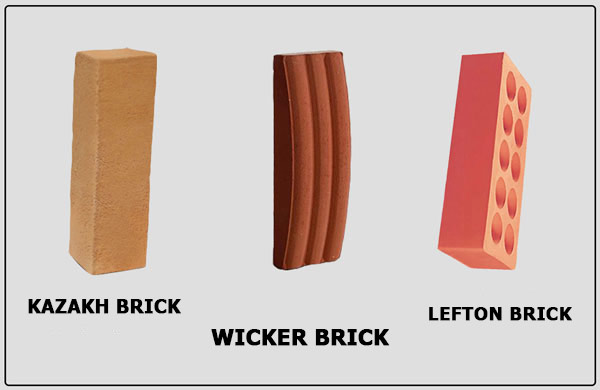
Bahmani Brick
Bahmani brick, also known as coarse or Zobre brick, is a type of Lofthun brick made from clay. Apart from façades, it is commonly used in wall construction. It comes in peach, red, and yellow shades, with yellow being the most widely used. They are usually produced in thicknesses of 3 to 5 cm.
Glazed Brick
Glazed bricks are coated with a protective glaze, making them highly resistant to chemicals, erosion, and harsh climates. Available in a wide variety of colors, glazed bricks are not only attractive for façades but also suitable for load-bearing walls, tiling, flooring, and wall skirting.
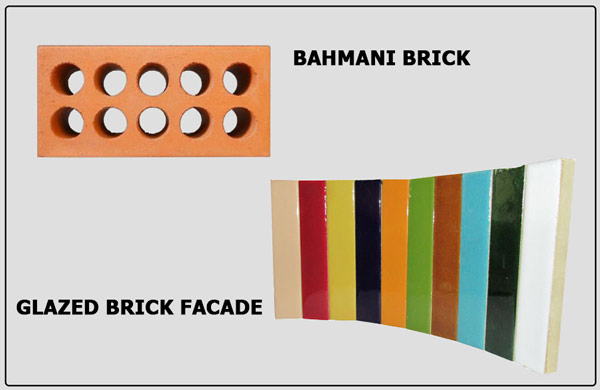
Benefits of Using Facing Bricks
- Perfect Geometry: High-quality bricks have precise shapes, uniform dimensions, and sharp edges, ensuring a flawless façade.
- Fire and Heat Resistance: Quality refractory bricks can withstand up to 1300°C without deformation, providing safety and durability.
- Wide Variety: Facing bricks come in multiple materials, designs, colors, and sizes, offering great flexibility for different architectural styles.
- Low Water Absorption: Premium bricks absorb less than 20% water, which protects them against frost damage and increases their lifespan.
- Smooth Surface: Quality bricks are free from cracks, efflorescence, and defects, ensuring an authentic and aesthetic façade.
- Strong Material: Dense and heavy bricks with a ringing sound when struck indicate durability and reliability.
- Rich Colors & Textures: A wide range of brick colors and textures brings character and elegance to buildings. Glazed bricks, in particular, add a striking decorative effect.
When choosing a brick facade, consider the following:
- Budget: Brick facades come in a variety of prices.
- Quality: Make sure you buy brick facades from reputable centers with a quality guarantee.
- Hardness test: By dragging a fingernail on the brick, if there is no change in its appearance, it indicates the hardness and high quality of the brick.
- Desired style: Brick facades are produced in a variety of designs and colors that you can choose according to your taste.
- Weather conditions: Some types of brick facades are more resistant to certain weather conditions. In humid climates, use bricks with very low water absorption.
- Water absorption test: To check this, put the brick in water for 24 hours and then calculate the percentage of water absorption.
- Dandruff resistance test: Dandruff is the enemy of the beauty of the facade. To ensure that there is no dandruff, soak the brick in water, and after drying, look for white or gray spots. Up to 10% of the brick is acceptable, but more than 20% indicates poor quality.
- Valid certification: For high-risk locations such as engine rooms, use refractory facing bricks with valid certificates.
- Consult an expert: If you need guidance, seek help from experienced professionals. Ultimately, by choosing the right brick, you can add beauty and authenticity to the facade of your building.
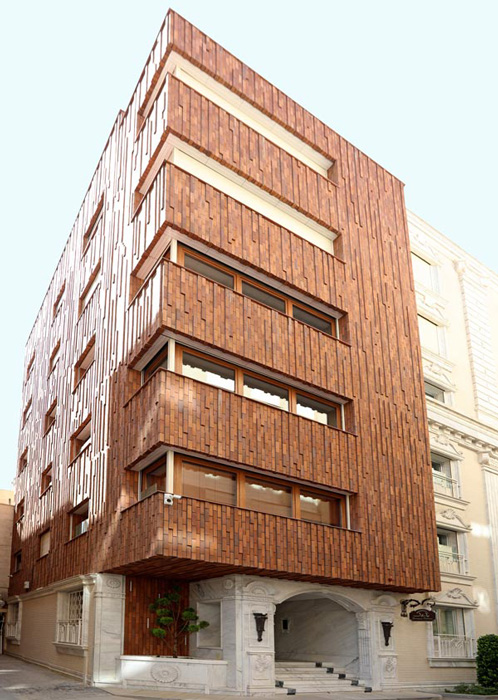
Conclusion
Choosing the right facing brick is more than just a construction decision—it is an investment in the aesthetics, durability, and identity of your building. With options ranging from traditional Kazakh bricks to modern fireclay and glazed bricks, every style and requirement can be matched with a suitable solution.
High-quality bricks not only enhance the visual harmony of the façade but also provide long-term protection against harsh weather, fire, and erosion. By considering factors such as design style, climate conditions, water absorption, and supplier credibility, you can ensure a façade that is both beautiful and long-lasting.
In the end, a well-chosen brick façade reflects authenticity, strength, and timeless elegance—qualities that elevate any architectural project.






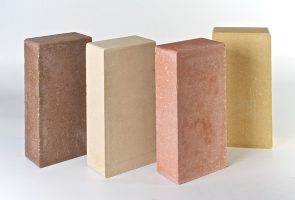
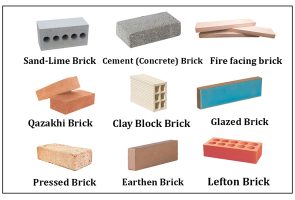
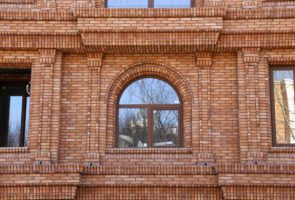
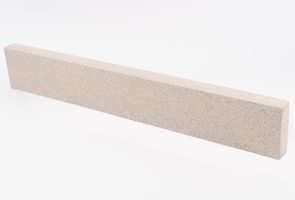
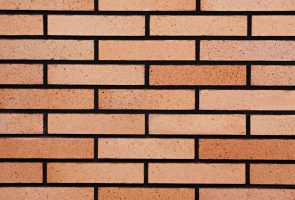
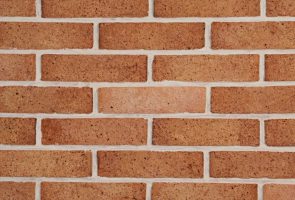

Comments
Your feedback is important to us. Please share comments or ask questions you haven’t found the answer to yet.